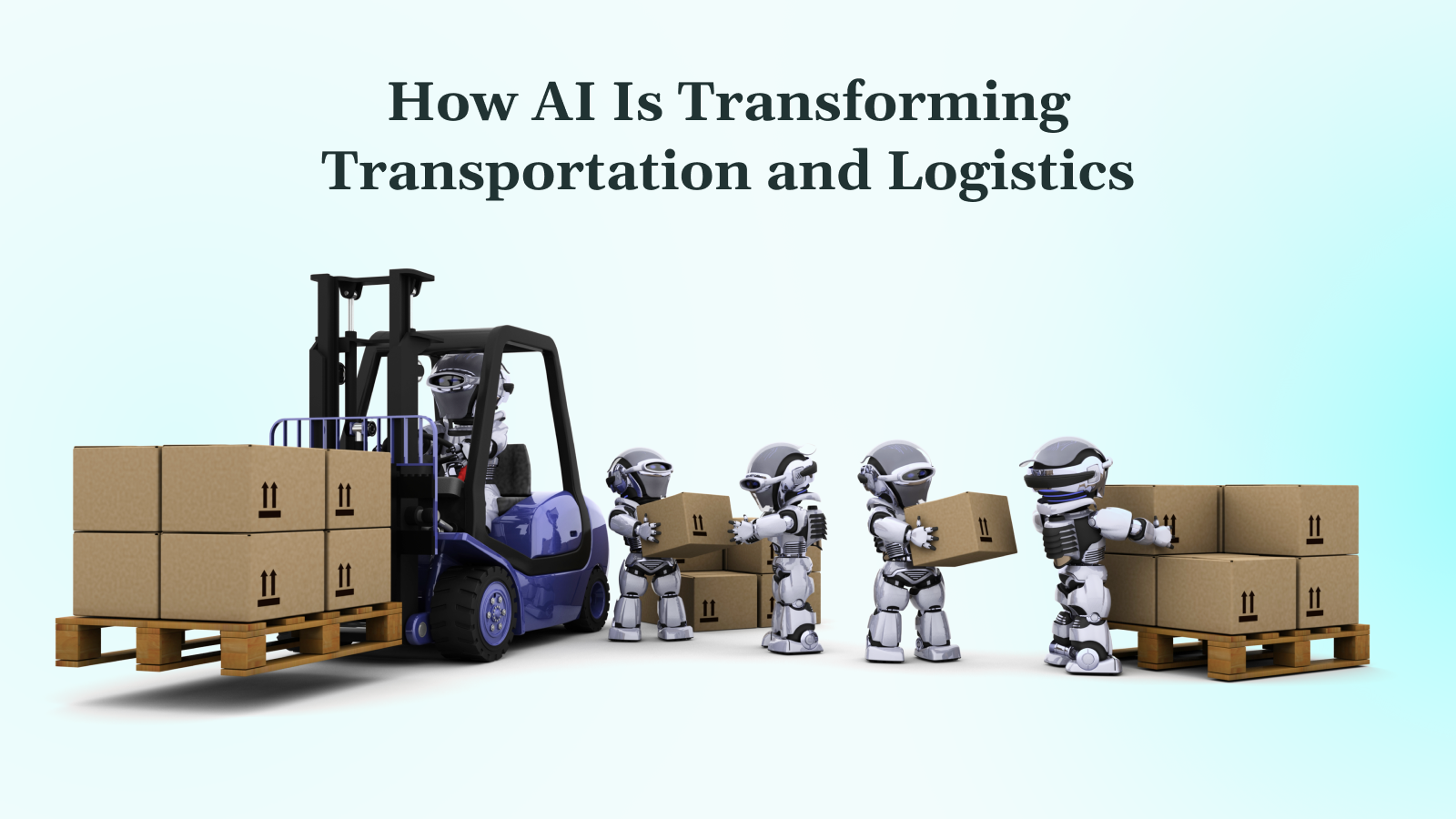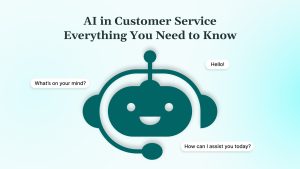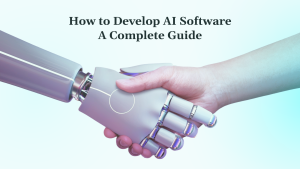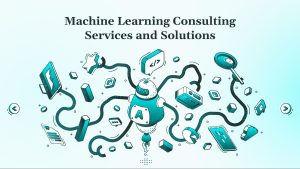Transportation and logistics companies face rising challenges. Increasing fuel costs, shrinking driver pools, unexpected vehicle breakdowns, and inventory imbalances disrupt operations and reduce profits. These issues make it challenging to meet the growing demands of customers for fast and reliable delivery.
AI in transportation management offers a powerful solution. By analyzing real-time data, AI optimizes routes, predicts maintenance needs, automates warehouse processes, and improves supply chain visibility. This helps companies cut costs, minimize downtime, and enhance delivery accuracy.
This blog explores how AI in transportation management and logistics is transforming the industry. You will learn about key applications like route optimization, predictive maintenance, and intelligent warehouse automation. We will also discuss why more companies are adopting AI now and what the future holds for this technology.
Key Takeaways
- AI in transportation management enhances efficiency by optimizing routes, predicting maintenance needs, and automating warehouse tasks.
- Leading companies demonstrate measurable cost savings, reduced downtime, and enhanced delivery accuracy through AI adoption.
- Successful AI integration requires clean data, updated infrastructure, and collaboration between technology and operations teams.
- Early investment in AI solutions positions logistics providers to meet rising customer expectations and regulatory demands effectively.
What Is AI in Transportation and Logistics?
AI in transportation and logistics refers to software systems that utilize machine learning to analyze large volumes of data and make accurate decisions. These systems support operations like fleet routing, delivery scheduling, and inventory control. It does this by processing inputs from GPS, sensors, traffic feeds, and historical performance data.
A typical AI model ingests data from multiple sources, identifies patterns, and delivers recommendations or triggers automated actions. For example, it can combine live traffic conditions, vehicle availability, and delivery windows to assign the most efficient routes across a fleet. Over time, the system improves as it learns from outcomes.
What Is the Role of AI in Transportation Management and Logistics?
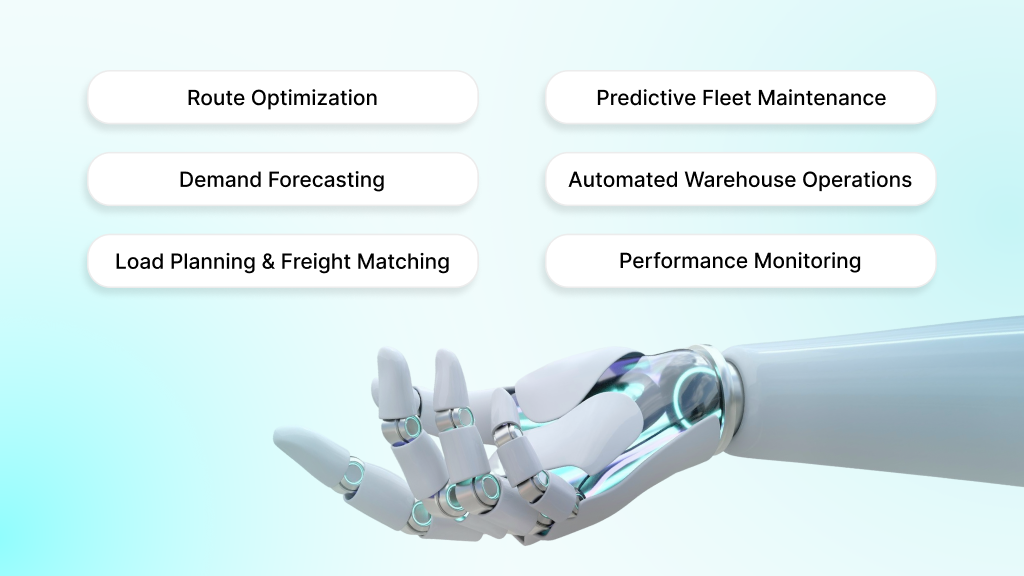
AI serves multiple critical functions across transportation and logistics operations, each addressing specific operational challenges through data-driven automation and optimization.
Route Optimization and Dynamic Planning
AI-powered route optimization engines analyze live GPS data, traffic conditions, road closures, weather updates, and vehicle load capacity in real time. It uses machine learning models trained on past delivery performance. With it, the system evaluates millions of routing combinations to determine the most efficient path for each vehicle.
As conditions change throughout the day, such as delays or cancellations, AI dynamically recalculates the route. This ensures timely deliveries while minimizing fuel consumption and wear on the fleet.
Predictive Fleet Maintenance
Instead of relying on fixed maintenance intervals, AI systems ingest high-frequency sensor data. It takes the data from engine diagnostics, fuel usage, brake systems, and historical failure logs to inform its decisions. By identifying anomalies in performance patterns, the system forecasts which components are likely to fail and when. This enables fleet managers to schedule maintenance ahead of breakdowns. This thereby reduces downtime and extends the lifespan of their assets. The algorithms become more accurate over time by learning from each maintenance outcome.
Demand Forecasting and Inventory Management
AI models trained on historical order data, promotional activity, seasonal trends, and external variables such as weather or economic indicators predict demand across SKUs and regions. These systems adjust forecasts continuously and flag mismatches between expected and actual movement. This enables logistics teams to fine-tune replenishment cycles, reduce overstocking, and avoid last-minute stockouts.
Automated Warehouse Operations
Using a combination of video analytics, computer vision, and AI-powered object recognition, warehouse systems track real-time inventory movement. These systems classify packages, monitor stock levels on shelves, and map item locations without human input. Over time, they learn high-frequency order patterns and optimize picking routes, shelf placements, and restocking logic to reduce fulfillment time and improve labor efficiency.
Load Planning and Freight Matching
AI calculates the ideal way to load each truck by analyzing shipment dimensions, weight distribution, stacking constraints, and delivery urgency. It runs simulations to find the most stable and space-efficient configurations. For freight matching, machine learning models evaluate historical carrier performance, lane preferences, availability, and capacity to pair loads with carriers in real time, reducing empty miles and last-minute tendering failures.
Driver Safety and Performance Monitoring
Advanced Driver Assistance Systems (ADAS) use AI to monitor driver behavior through onboard sensors and cameras. These systems track acceleration, braking, lane changes, and alertness signals to detect unsafe patterns. AI then provides real-time warnings, such as collision alerts or fatigue detection, and generates driver scorecards used for coaching and performance improvement. The models continuously refine themselves based on incident history and individual driver trends.
Why Are Industry Leaders Adopting AI Now?
AI adoption is accelerating because transportation management faces new realities that legacy methods cannot address. The drivers include:
- Limits of traditional optimization: After years of process improvement, most logistics companies have already cut costs and increased speed wherever manual tools allowed. Further gains now require systems that can process real-time variables and make high-frequency decisions, tasks beyond the scope of conventional software.
- Data readiness: Modern fleets and warehouses generate vast datasets from telematics, scanners, IoT sensors, and historical records. This volume and structure enable the training of machine learning models that deliver accurate predictions and reliable automation.
- Technical maturity: The maturity of AI tools, combined with cloud infrastructure and open integration standards, has reduced the effort required to embed intelligence into existing systems. AI no longer demands full-system overhauls; it can now extend what companies already have.
- Proven operational gains: Organizations utilizing AI are demonstrating measurable improvements in delivery accuracy, fleet utilization, and demand planning. These improvements are shifting performance baselines across the sector, forcing others to catch up or fall behind.
- Growing regulatory demands: Fleet safety rules, emissions limits, and trade documentation requirements now demand continuous monitoring and reporting. Manual tracking introduces risk; AI supports compliance by automating rule checks, logging activity, and flagging issues in real time.
- Rising customer expectations: Fast shipping, real-time tracking, and consistent delivery windows have become standard. Meeting these demands at scale can not be done manually; AI systems allow logistics providers to maintain service levels without disproportionate increases in cost or staff.
Advanced AI Applications in Transportation Management
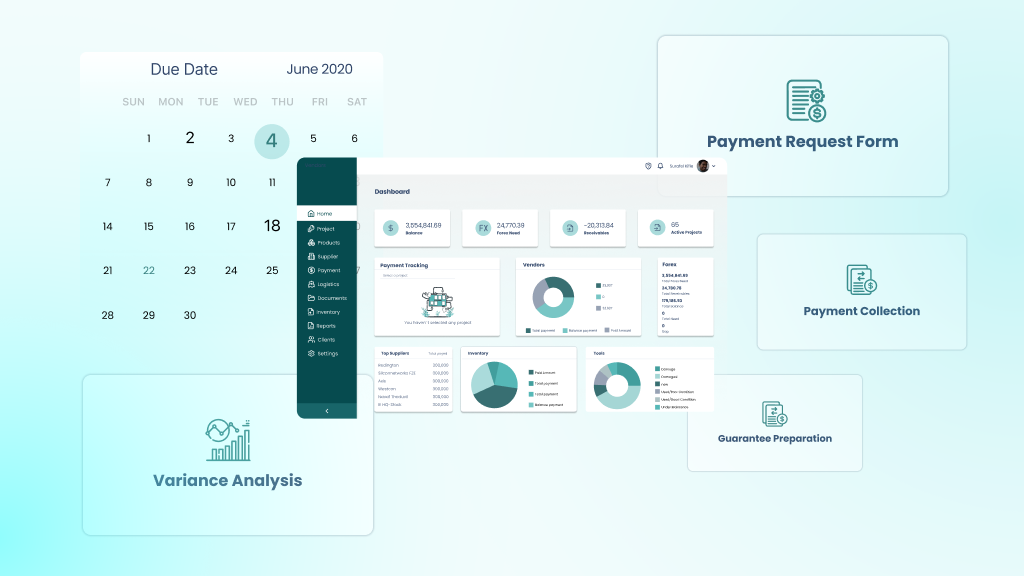
Beyond route planning and basic automation, logistics companies are now leveraging AI to address more complex operational challenges. These use cases rely on machine learning, real-time data streams, and predictive algorithms to improve speed, safety, and service reliability across the transportation network.
Predictive Maintenance Using Sensor Data
Modern fleets are equipped with sensors that continuously monitor engine temperature, tire pressure, brake conditions, and fuel efficiency. AI models process this data to predict component wear and identify early signs of failure. Instead of relying on fixed service intervals, maintenance schedules are adjusted according to the vehicle’s actual health. This minimizes breakdowns during active routes, reduces repair costs, and improves asset utilization.
Coordinated Load Planning Across Fleets
AI systems analyze shipment details, vehicle capacities, delivery deadlines, and geographic constraints across all available vehicles to optimize routes. By evaluating this data collectively, the system identifies where loads can be consolidated, which trucks can operate in tandem, and how to minimize empty return trips. This cross-fleet coordination reduces fuel waste and ensures that cargo space is used to its full potential.
Inventory Management Automation
Warehouses and distribution hubs generate large volumes of structured and unstructured data, including scanner logs, order histories, and SKU-level movements. AI analyzes this data to detect trends in product turnover, reorder cycles, and picking patterns. The system can forecast when to restock, where to reallocate slow-moving items, and how to avoid overloading storage zones. This results in lower holding costs and improved throughput.
Proactive Cold Chain Management
Cold chain logistics demand uninterrupted temperature control. AI monitors data from refrigeration units, cargo sensors, and traffic feeds to forecast where and when a shipment may fall outside safe ranges. If a delay is predicted, the system can reroute the vehicle, adjust temperature settings, or alert staff before the cargo degrades. These predictive interventions protect pharmaceuticals, food, and other sensitive goods.
Real-Time Driver Assistance and Safety Support
AI enhances vehicle safety systems with real-time monitoring of the road environment and driver behavior. Inputs from cameras, radar, and LIDAR feed into onboard systems that enable lane departure warnings, adaptive cruise control, automatic emergency braking, and fatigue detection. These features reduce the burden on drivers during long shifts, decrease the likelihood of accidents, and provide a safer delivery experience.
Automated Customs and Inspection Processing
Cross-border shipments often stall due to missing paperwork, manual checks, or mismatches in inspections. AI automates document review by extracting, classifying, and validating data from bills of lading, invoices, and customs declarations. It compares information against trade regulations and past inspection outcomes, flagging inconsistencies early. This reduces clearance delays and helps companies maintain consistent international delivery times.
Driver Behavior Analytics and Intelligent Driver Care
AI tracks data from telematics devices to monitor how each driver operates their vehicle. It assesses metrics such as acceleration, braking, turning, and idle time. These insights are used to generate safety scores, deliver personalized coaching, and alert drivers when fatigue or distraction is detected. Over time, fleets can reduce accident rates, improve insurance outcomes, and support healthier working conditions for drivers.
Real-Time Vehicle Tracking and Traffic Management
AI integrates location data, traffic patterns, road incidents, and delivery schedules to optimize active routes. If a shipment is at risk of being delayed due to congestion, construction, or adverse weather conditions, the system recalculates in real-time and pushes new instructions to the driver. Fleet managers access dashboards that provide live status updates, helping them intervene before delays escalate.
Autonomous Vehicles in Logistics
Self-driving technologies use AI to process data from cameras, sensors, and maps to control vehicle motion. In logistics, these systems are already being piloted in restricted environments such as ports, warehouses, and highway corridors. Autonomous vehicles help reduce driver workload, cut operational costs, and maintain consistent performance over extended periods. While full autonomy is not yet mainstream, assisted logistics applications are rapidly expanding.
Flight Delay Prediction for Cargo Scheduling
Delays in air freight can derail entire supply chains, especially when ground operations are tightly scheduled. AI predicts flight disruptions by analyzing historical delays, current weather, air traffic density, and airline reliability data. Logistics companies use these insights to reroute connecting trucks, adjust cold chain support, or alert recipients early. This enhances delivery accuracy and safeguards sensitive cargo during transit.
Insurance Fraud Detection Using AI
Fleet managers and insurers face a growing challenge in detecting false or exaggerated claims. AI algorithms compare reported accidents with sensor data, including speed, braking force, and GPS location. Discrepancies trigger further review before claims are processed. Over time, the system learns common fraud patterns and reduces the number of illegitimate payouts, while maintaining an efficient claims process for genuine incidents.
AI-Powered Customer Service Chatbots
Customers expect immediate answers about package location, ETAs, and rescheduling. AI chatbots handle these queries through natural language processing, pulling real-time data from TMS or delivery platforms. These bots answer common questions, update shipment status, and resolve simple issues without involving support teams. This reduces support ticket volume and ensures a more responsive customer experience.
How Industry Leaders Are Applying AI in Transportation Management and Logistics
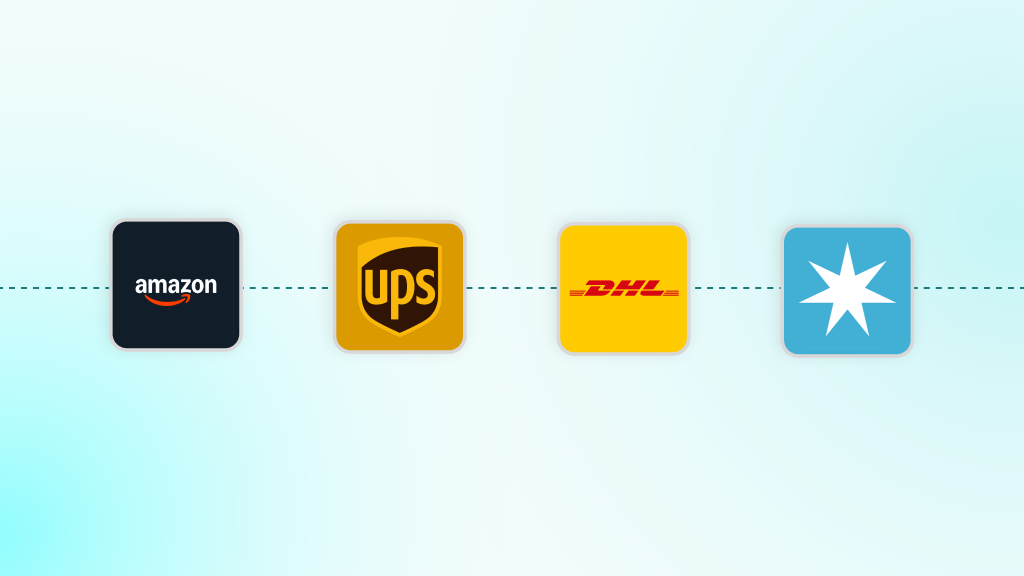
Industry leaders across various segments demonstrate how the implementation of AI creates measurable operational improvements and competitive advantages in the transportation and logistics sectors.
Amazon
Amazon has integrated AI throughout its fulfillment network, deploying over 750,000 robots in warehouses worldwide to automate tasks such as picking, sorting, and inventory management. The AI systems predict demand patterns to pre-position inventory closer to customers, reducing delivery times and transportation costs. The machine learning algorithms at Amazon optimize warehouse layouts, automate quality control inspections, and coordinate thousands of robots working alongside human employees.
UPS
UPS leverages its AI-powered ORION (On-Road Integrated Optimization and Navigation) system to optimize delivery routes for over 55,000 drivers daily. The system analyzes over 200,000 route possibilities per driver to reduce miles driven by 100 million annually, saving approximately 10 million gallons of fuel. UPS reports that ORION has eliminated over 400,000 tons of CO2 emissions while improving delivery efficiency and customer satisfaction.
DHL
DHL deploys AI for demand forecasting and delivery time prediction across its global network. The company’s machine learning models analyze historical shipping patterns, seasonal trends, and external factors, such as weather and holidays, to predict package volumes and optimize resource allocation. DHL’s AI systems provide customers with accurate delivery time estimates and automatically reroute shipments to avoid delays.
Maersk
Maersk applies AI to optimize shipping routes and reduce fuel consumption across its container vessel fleet. The company’s AI algorithms analyze weather patterns, ocean currents, and port congestion to determine optimal sailing routes that minimize fuel costs and transit times. Maersk reports fuel savings on major shipping lanes through AI-powered route optimization.
The examples mentioned above reveal several key success factors: companies that achieve the best results start with specific, measurable problems rather than broad AI initiatives. They invest in data quality and integration before deploying AI algorithms. Most importantly, they maintain human oversight and decision-making authority while using AI to augment operational capabilities.
Challenges of AI Adoption in Logistics and Transportation Management
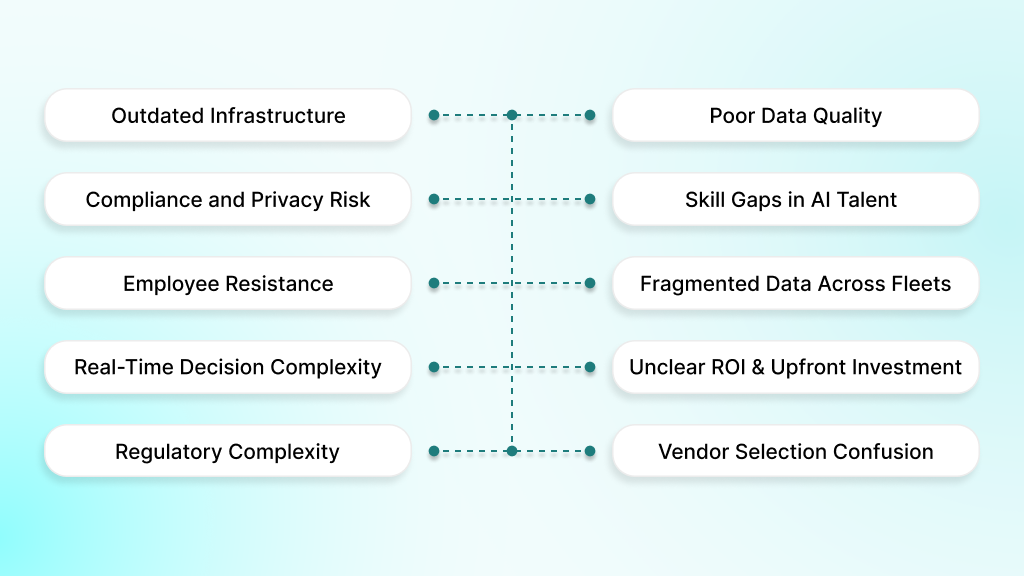
Despite the promising benefits, transportation and logistics companies face significant obstacles when implementing AI technologies, which can delay or derail adoption efforts.
Outdated Infrastructure
Many logistics companies still rely on legacy TMS or WMS platforms that were never built for AI integration. Without real-time data access or API compatibility, even the best AI systems cannot function effectively.
- Solution: Evaluate system readiness early. In many cases, middleware or platform upgrades are needed to support modern AI tools.
Poor Data Quality
Gaps, inconsistencies, and siloed data across systems make it difficult for machine learning models to deliver reliable output.
- Solution: Focus first on consolidating and cleaning operational data. A unified, structured data layer is essential for any AI initiative to succeed.
Compliance and Privacy Risk
With logistics companies handling sensitive cargo, customer data, and cross-border shipments, AI systems must operate within strict regulatory environments.
- Solution: Build in security and governance controls from the start, encrypt data, limit access, and track changes to meet both local and international compliance standards.
Skill Gaps in AI Talent
Most logistics organizations lack in-house expertise to build, scale, or maintain AI systems.
- Solution: Partner with development teams like DEVtrust, who will fill this gap by developing AI-powered logistics tools built for real-world use, such as fleet tracking, predictive maintenance, and warehouse automation, while also providing integration and long-term support.
Employee Resistance to Change
Frontline teams may perceive AI as a threat to their job security or autonomy in decision-making. Without buy-in, even the best tools go underused.
- Solution: Prioritize transparency. Involve operations teams early, clarify the role of AI, and invest in retraining to facilitate a smooth transition for teams.
Fragmented Data Across Fleets and Carriers
Transportation management often involves multiple carriers, subcontractors, and platforms. Disparate data sources and formats make it difficult to achieve end-to-end visibility and accurate AI-driven decisions.
- Solution: Invest in data integration platforms and unified data standards that consolidate fleet and carrier information for AI analysis.
Real-Time Decision Complexity
Transportation managers must react instantly to traffic disruptions, vehicle breakdowns, and delivery changes. Legacy systems cannot support the speed or complexity of decisions AI requires.
- Solution: Deploy AI-enabled decision-support tools built for real-time inputs and dynamic adjustments in routing, scheduling, and resource allocation.
Unclear ROI and Upfront Investment
For many decision-makers, the cost of AI is hard to justify without concrete savings projections or benchmark results.
- Solution: Start small. Use pilot programs tied to specific KPIs, such as reduced fuel costs or faster delivery times, to validate value before scaling.
Regulatory Complexity in Transportation
Transportation management must comply with a growing number of safety, emissions, and driver work-hour regulations. Manual compliance checks slow operations and increase risk.
- Solution: Implement AI-powered compliance monitoring systems that automate rule checks and provide real-time alerts for potential violations.
Vendor Selection Confusion
With hundreds of AI vendors on the market, it is challenging to distinguish between generalized platforms and industry-specific solutions.
- Solution: Choose a partner with logistics experience and a proven track record of case studies that demonstrate seamless integration with supply chain systems.
What is Next for AI in Transportation and Logistics?
AI adoption is shifting beyond isolated use cases to integrated, intelligent systems that support real-time decisions, optimize performance, and enhance human oversight.
AI-First Platforms Will Replace Legacy TMS
New platforms will be built from the ground up to use AI at every stage, including routing, scheduling, exception handling, and delivery confirmation. These systems will surface recommendations alongside confidence scores and relevant data to support operator judgment.
Human-AI Collaboration Becomes the Norm
Rather than full automation, logistics teams will work alongside AI. While algorithms optimize routes and analyze performance, humans will focus on addressing exceptions, customer communication, and strategy. This model facilitates change management and delivers improved operational control.
Decision Support Tools Get Smarter
AI will go beyond analysis to suggest specific actions, explain their impact, and prioritize decisions based on business outcomes. Teams will get actionable options with context.
Workforce Roles Shift Toward Oversight
As AI handles more routine tasks, logistics professionals will focus on interpreting insights, supervising systems, and aligning operations with long-term goals. This will require new skills, retraining, and more data-savvy hiring practices.
Cross-System Intelligence Will Be the Standard
AI tools will no longer work in silos. Maintenance alerts will align with routing plans. Inventory forecasts will sync with transport logistics. This coordination will eliminate blind spots and reduce delays.
Assisted Driving Will Expand Autonomy
Full autonomy is years away, but assisted systems will continue to improve, automating tasks such as lane changes, dock navigation, and tight-space maneuvering. These features will enhance safety and lay the groundwork for broader adoption.
How DEVtrust Helps Transform Logistics with AI
DEVtrust builds AI-powered logistics systems that address recurring challenges, such as inefficient routing, poor visibility, and high fleet downtime. Each solution is tailored for fast deployment, seamless integration, and measurable operational impact.
Services That Deliver Impact
DEVtrust helps logistics providers remove operational roadblocks through AI-driven platforms that reduce delays, automate processes, and improve coordination across fleets and warehouses. Core service areas include:
- Real-Time Tracking and Visibility: Shipment tracking with dynamic updates and centralized dashboards that bring together data from multiple carriers and systems.
- Route Optimization and Planning: AI-based tools that adjust for live traffic, delivery constraints, and priority windows to cut fuel usage and improve reliability.
- Fleet Management and Automation: Platforms that manage scheduling, trigger proactive maintenance, and monitor driver performance to reduce breakdowns and boost uptime.
- Custom Logistics Software Development: Built-from-scratch systems designed to work with existing operations, connect with third-party APIs, and scale without redevelopment.
Where It Works in Practice
One example is GOFR Courier, a Toronto-based service that needed tighter control over dispatch and customer communication. DEVtrust delivered a custom system with cost estimation, route optimization, and real-time tracking integrated with Google Maps and the Tookan API. As a result, dispatchers gained complete control and customers received accurate updates without relying on third-party tools.
Conclusion
The future of transportation and logistics depends on the ability to adapt quickly and leverage new technologies. Organizations that take decisive steps now to integrate AI-driven solutions will position themselves ahead of the competition and build more resilient, efficient operations. Success will come from embracing innovation, fostering collaboration between humans and machines, and continuously refining processes with data-backed insights.
Partnering with a trusted expert like DEVtrust can accelerate this transformation. With tailored AI solutions designed specifically for transportation management challenges, they help businesses unlock measurable improvements without disruption. Book a call today if you are planning to upgrade to a smarter, more agile logistics operation.
How AI Is Transforming Transportation and Logistics
Discover the impact of AI in transportation management. Explore real-time tracking, smarter route management, and efficient logistics. Click to learn more!
Contact Us